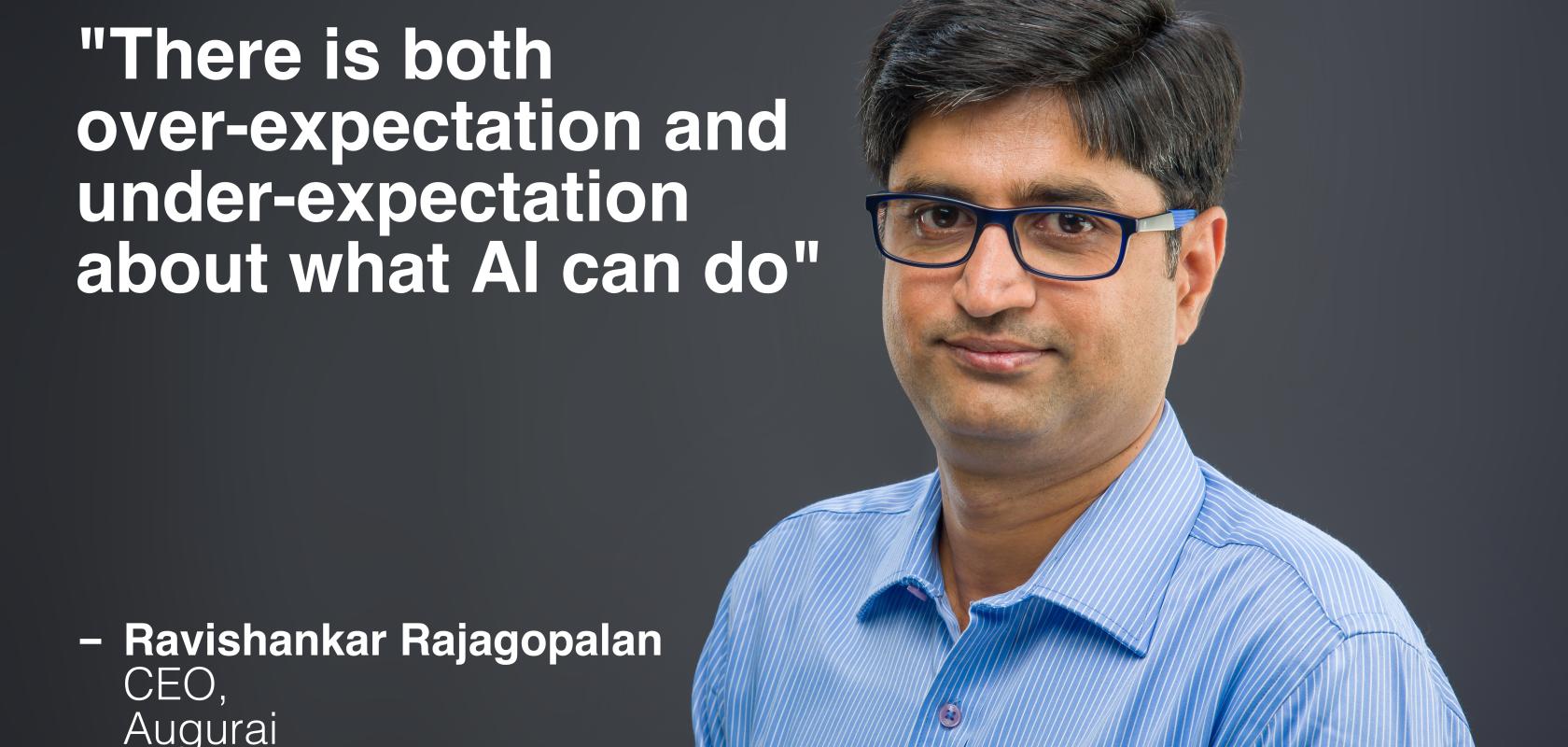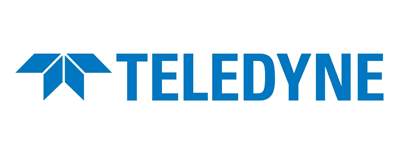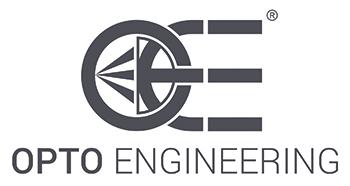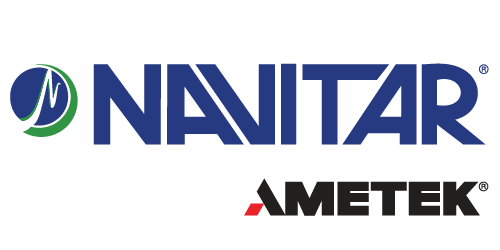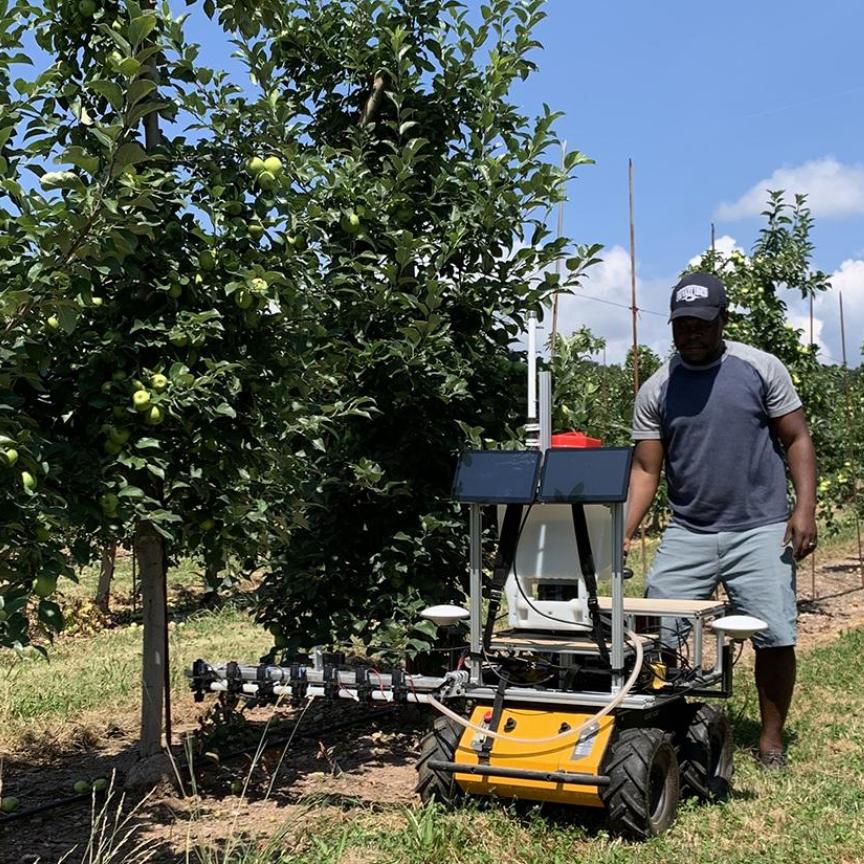Visionaries 2024 nominee Ravishankar Rajagopalan – CEO of Augurai, a company specialising in building vision systems for optics, AI, automation and robotics in India – discusses his view of the contemporary vision market.
Name: Ravishankar Rajagopalan
Company: Augurai
Role: CEO
Location: Tiruchirappalli, Tamil Nadu, India
Providing error-detection peace-of-mind in assembly-line scenarios, Augurai integrates optics, robotics and automation with AI to build complete vision solutions for “automotive, FMCG, metals and other manufacturing companies in India for various solutions,” as the company’s CEO, Ravishankar Rajagopalan explains.
As a buyer and integrator of machine vision cameras, optics and lenses, lighting and illumination and cabling products and accessories, Augurai and Rajagopalan take pride in their “intense optics-first approach [as a] difference-maker in the overall machine vision system,” said Rajagopalan in a recent interview with Imaging and Machine Vision Europe. “With our internal optical team, we develop the optics (cameras, lenses and lighting) to ensure all the defects can be seen with the camera. Combined with state-of-the-art AI and the right automation, [this] provides a highly accurate and robust vision system.”

Although Augurai network internationally, sometimes as a speaker, at exhibitions and conferences, they focus on the industrial markets in India. “While the European vision system integrators are known for such quality work,” said Rajagopalan, “there is no integrator in India who focuses on optics as much as we do.” The company works with “leading enterprise manufacturing clients [who can] vouch for our superior R&D capabilities, as well as the robustness of the solutions we have deployed compared to that of our competitors.”
Visionary work
“The internal inspection of castings is a key challenge for castings manufacturers,” says Rajagopalan, as he introduces the company’s history developing boroscopes for casting inspection. “We have developed a patent-pending technology that uses boroscopes to get 360º images of the internal surfaces of castings, and uses AI algorithms to identify unseen defects.” This innovative use of commonly available borescope technology resulted in five-fold CapEx savings for Augurai’s client, yet the quality of the system means it’s still able to identify defects as little as 100 microns in size.
The start of this journey came in early 2021, when internal inspection using boroscopes was first looked into by Augurai’s R&D team. Now, “the patent-pending solution is being piloted for various casting inspection applications,” says Rajagopalan. The innovative aspect of this work, is that the low-cost solution enables “360º internal inspection with commonly available boroscopes,” and so is being deployed by “leading automotive component manufacturers who, otherwise, would have had to look for more manual inspection solutions.
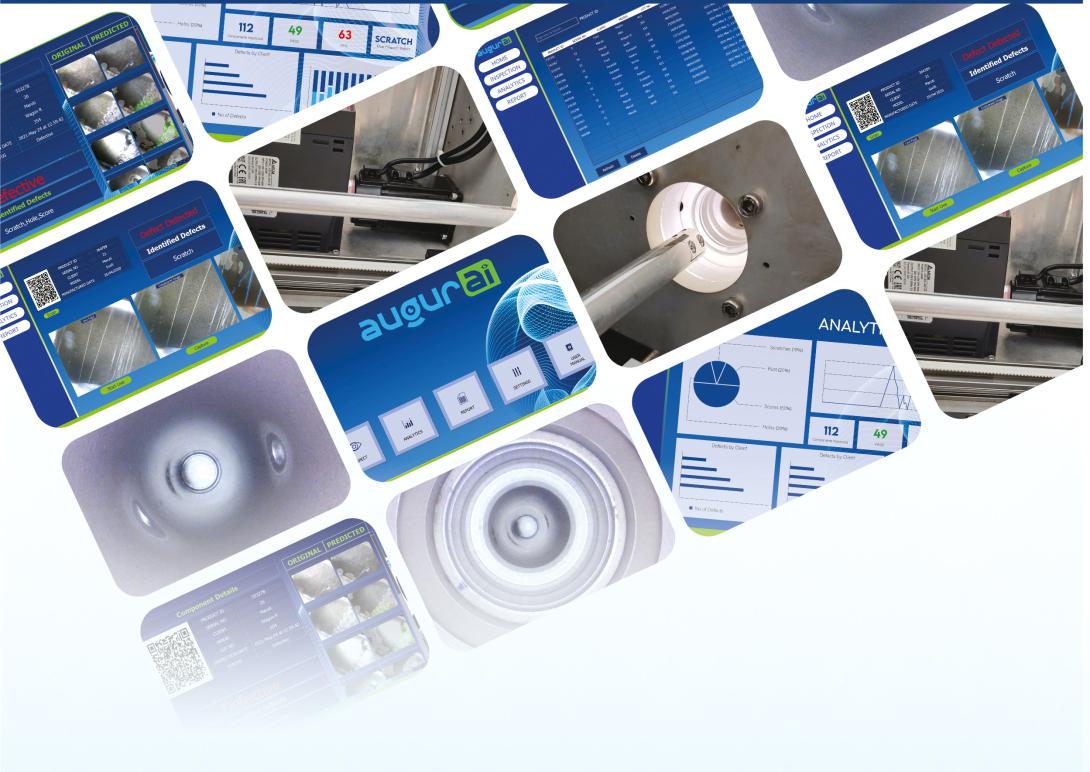
Image: Augurai
In another project, Augurai partnered with a leading FMCG manufacturer in India to “deploy 360º high-speed bottle-print inspection at 120 bottles per minute,” said Rajagopalan. Although the client had been engaged with multiple other vision partners for nearly three years prior to Augurai’s involvement, none of them were able to satisfactorily crack the solution. But after winning the contract – in large part thanks to the right combination of cameras, lenses and lighting products that could generate clear images of the bottle compared to the client’s previous capabilities – “our focus on superior optics enabled us to consistently see the smallest defects,” said Rajagopalan. “This convinced the client to go with us, successfully deploying the system last year.”
“Achieving better accuracy than they were expecting, and with the system [now] expected to reduce manpower by about 150 manual inspectors,” said Rajagopalan, the client is now expanding the solution to further lines while also exploring several other use cases for them.
“We designed an innovative lighting-based approach to crack the problem”
When another of Augurai’s clients, a tier-one giant in the automotive sector, had a “recurring problem with the quality of one of their key components which could not be addressed with other standard vision suppliers,” said Rajagopalan, “we designed an innovative lighting-based approach to crack the problem and ensure no defects passed through. The client is now delighted with the solution and we are engaged in several other [similar] projects.”
In another example working with a “well-known global brand in the tier-one automotive sector”, when faced with “high customer complaints with respect to a small component in a critical assembly supplied to all major automotive OEMs across the globe,” Augurai was asked to step in, said Rajagopalan. Although “they were a client with high exposure to vision systems – having more than 150 vision system deployments in their assembly lines – given the odd geometry of the component [in question], the traditional vision systems proposed by the client’s existing vendors were unable to see the component defects properly.” In response to the issue, Augurai “designed a custom lighting [setup] that helped highlight the component, and, with these, we were able to capture over ten defects.”
How to successfully manage high client expectations
When incorporating a new, emerging and often misunderstood technology into any process, there’s often over-expectation around what it can do. “Many of our clients have over expectations with respect to what AI can do,” said Rajagopalan. “With all the hype surrounding AI, they expect it to be 100% accurate. We educate them on the need to generate clean data using Right Optics, the real capabilities of AI and what can [realistically] be expected.
Rajagopalan’s main piece of advice on how to win and retain clients who expect too much from AI is simply be honest. “Being honest and upfront with them helps to set the right expectations. We do not oversell our products, [instead we] provide a realistic picture of their capabilities. Many large manufacturers have tried their hand at vision systems and failed in the past,” said Rajagopalan, so “the first question we ask [ourselves] is, ‘Is there paranoia about vision systems?’
“With all the hype surrounding AI, they expect it to be 100% accurate”
For Rajagopalan and Augurai, the role of the vision integrator is as an educator. “We educate them on the need for appropriate optics for the success of vision systems, and how a combination of optics, AI and automation is required to design robust vision systems,” he said. But “it’s the clients who have been through bad vision system deployments before who appreciate our solutions better.”
Along with expecting AI to provide solutions akin to magic, Rajagopalan believes the technology is also being underestimated at the same time. “On the one hand, customers expect 100% accuracy from AI,” he said, “and in the other extreme, customers do not believe AI can do as good a job as humans. In both cases, we educate them on the realistic output possible from [using] AI. So there is both over-expectation and under-expectation about what AI can do, but being honest and upfront and not setting the wrong expectations from the start helps to dispel the mismatches.”
How can vendors provide a better service for integrators?
It’s the vendors’ superior knowledge about their own products that’s most important to the integrators, according to Rajagopalan, when selecting the right component for the right role in a vision system. And the speed with which vendors are able to communicate this knowledge is crucial to both vendor and integrator alike. “Vendors are at their most helpful when we need technical information about a product and need quick notes for certain components,” said Rajagopalan, when asked how vendors can offer integrators a competitive advantage with good customer service. “They take the pain to validate our requirement and suggest appropriate components as needed. Given that many customers want [us to provide] quotations in a short time frame, a quick response from the vendors is super helpful for us.”
“Only a handful of our own vendors have demo systems for quick trials and experiments”
“Vendors with sales people who have good technical knowledge really gives them an advantage since they can strike out many wrong options before going to the technical team for final valuation,” said Rajagopalan, on the importance of spreading technical knowledge throughout vendor sales teams. “This saves a lot of time waiting for validation from the technical team.”
In terms of areas vendors should be looking at to improve their service, Rajagopalan suggests the option to ‘try before you buy’ could educate both sales people and integrators about new product capabilities. “Only a handful of our own vendors have demo systems out of India for quick trials and experiments. Better cooperation on this would prove beneficial for both, since we could target more challenging use cases.”
The future is bright for vision systems
“Compared to two years ago, we’re seeing increasing awareness and demand for vision systems across all manufacturing systems,” said Rajagopalan, on his hopes for Augurai’s expansion in the market. But there are also reasons for caution. “The appetite for the range of vision, however, varies from vertical to vertical,” he said. “The opportunity is there, as long as we are able to identify areas of high cost-of-poor-quality, and can convince the customer about the [high] return on investment (RoI) from such systems.”
“We deal with optics and AI and work with automation partners for SPM development and automation,” said Rajagopalan, “given different use cases require different machine development skill sets, it’s important to build relationships with good machine builders, which takes time. And this is a bottleneck we are trying to address in the immediate future,” showing that although the vision sector is set for growth, and integrators are ideally set to guide clients through it, there are still associated challenges to overcome.
Ravishankar Rajagopalan has been named as one of Imaging & Machine Vision Europe’s ‘Visionaries’ for 2024. Find out how to apply and nominate others to be recognised as a Visionary for groundbreaking work in the vision sector here:

